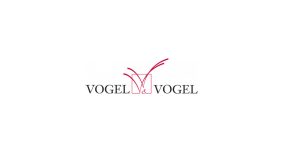In order to simplify procedures and lessen the burden and costs faced by undertakings, the Commission has recently revised Notice No 2005/C 56/04 on a simplified procedure for treatment of certain concentrations and Regulation No 802/204 implementing Regulation No 139/2004 on merger control. It has also updated its (optional) standard models on divestiture commitments and trustee mandates designed to facilitate the procedure for parties offering commitments in order to effectively remedy the competition issues raised, by bringing them into line with Commission Notice 2008/C 267/01 on remedies.

– by amending the market share thresholds required: horizontal mergers leading to an increase in markets share of less than 20 % (currently 15 %) and vertical mergers giving rise to a combined market share of less than 30 % (currently 25 %) will be eligible for the simplified procedure;
– by introducing a new category for use of the simplified procedure: a horizontal merger is suitable for treatment under the simplified procedure where the combined market share of the parties is less than 50 % and the increment (“delta”) of the Herfindahl-Hirschman Index (“HHI”) resulting from the concentration is below 150 (according to the notice, to find the HHI delta, the square of the merged entity’s market share post-concentration is calculated by summing the squares of the individual market shares of all parties and deducting it from the squares of the merged entity). For the simplified procedure, the parties can use a standard simplified short form and the Commission can adopt a short-form clearance decision within 25 working days from the date of notification without carrying out a market investigation. By adopting these new measures, the Commission hopes to achieve a 10 % increase in the treatment of concentrations falling within this context.
With the amendment of the “procedural” regulation, the Commission’s aim is to simplify and expedite the review of notifications and reasoned submissions allowing referrals of concentrations to it or to a Member State, by limiting the requests for information in standard forms for notifying concentrations especially for mergers subject to the simplified procedure, whilst ensuring “that sufficient information is provided regarding the structure of the concentration and that the most important internal documents prepared by the undertakings concerned discussing the concentration are submitted”. The Commission therefore encourages pre-notification contacts in order to be able to determine the precise amount of information required in a notification for mergers not eligible for the simplified procedure but where there is not likely to be any overlap of activity or vertical integration. It also incites the parties to request, at the pre-notification stage a dispensation from providing some of the requested information that they deem unnecessary for the review of their notification and provides for the introduction of a super-simplified notification procedure for joint ventures having negligible activities within the territory of the EEA (see amended Regulation No 802/2004, Annex 2, section 8.). But, in order to ensure that a sufficient level of information on planned mergers is provided, the Commission requires, at the risk of being in contradiction with its aim of simplifying and expediting procedures, the provision of information that it did not require previously (e.g. the requirement in both simplified and non-simplified procedures that the notifying parties present the relevant product and geographic markets, and “in addition to any product and geographic market definitions they consider relevant, all plausible alternative product and geographic market definitions” (see amended Regulation No 802/2004, Annex 1, section 6 and Annex 2, section 6.2). In other words, the level of information required upstream may not in any real sense reduce the red tape which businesses are required to face.

 MON COMPTE
MON COMPTE















